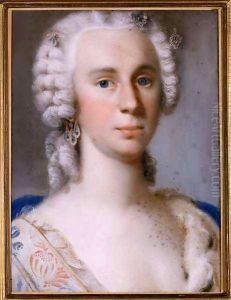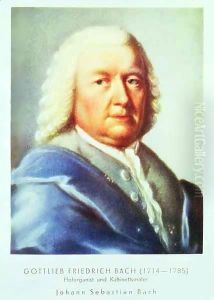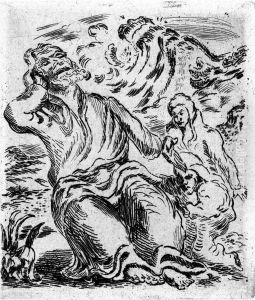Gottlieb Friedrich Bach Paintings
Gottlieb Friedrich Bach was a German painter and engraver born in 1724 in Weißenfels, a town in the Duchy of Saxe-Weißenfels. He was one of the sons of Johann Sebastian Bach, the esteemed Baroque composer, and his first wife, Maria Barbara Bach. Despite the shadow cast by his father's monumental legacy in music, Gottlieb Friedrich carved out his own niche in the visual arts, demonstrating considerable talent in his chosen field.
Gottlieb Friedrich spent his formative years in a culturally rich environment, undoubtedly benefiting from the artistic and intellectual milieu that surrounded the Bach family. However, unlike his siblings, he did not follow in his father's musical footsteps. Instead, he pursued a career in the visual arts, studying painting and engraving techniques that he would later apply in his professional life. His choice of profession was somewhat atypical for a son of the Bach family, which was predominantly known for its musical achievements.
As an artist, Gottlieb Friedrich Bach specialized in portraiture, creating works that captured the likeness and personality of his subjects. His style was rooted in the Baroque tradition but also exhibited elements of the emerging Rococo aesthetic that was gaining popularity during his lifetime. His portraits were characterized by a certain liveliness and a keen eye for detail, which made them highly regarded among his contemporaries.
Unfortunately, Bach's career was cut short; he died relatively young at the age of 44 in 1768. While not as widely known as his father or some of his musically inclined siblings, Gottlieb Friedrich Bach made a significant contribution to the visual arts during the Enlightenment period in Germany. His works remain a testament to his skill as an artist and provide insight into the cultural landscape of 18th-century Germany. Despite the scarcity of surviving works and the limited documentation of his life, Bach's artistry continues to be of interest to art historians and collectors today.


